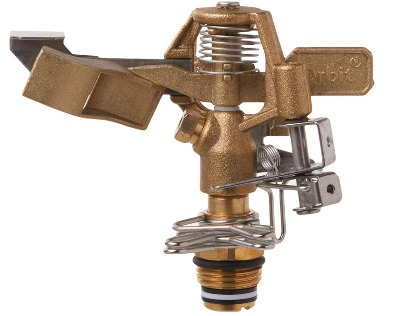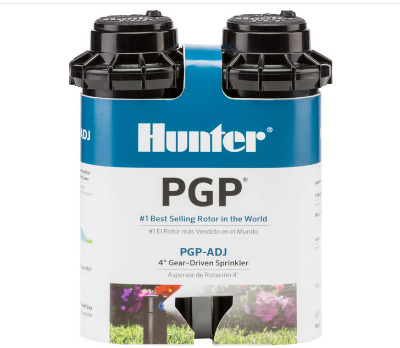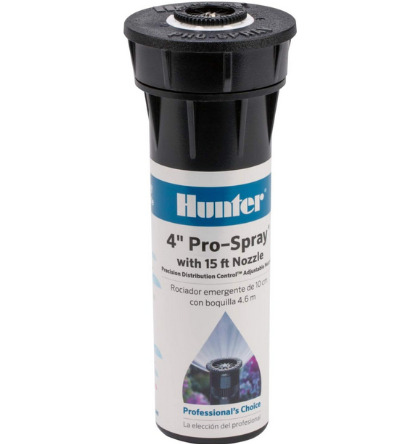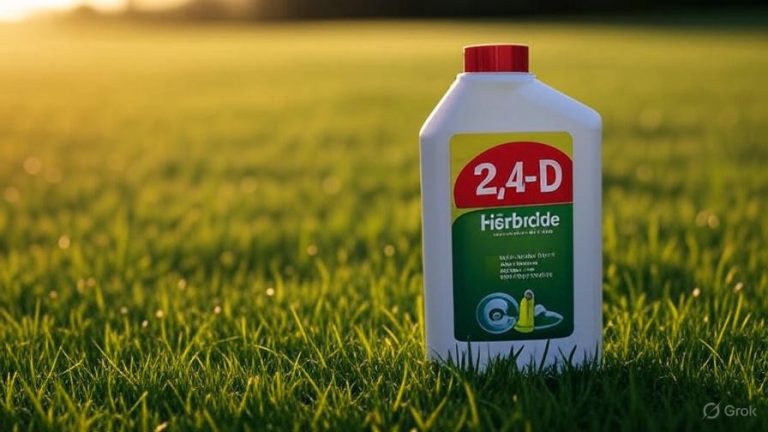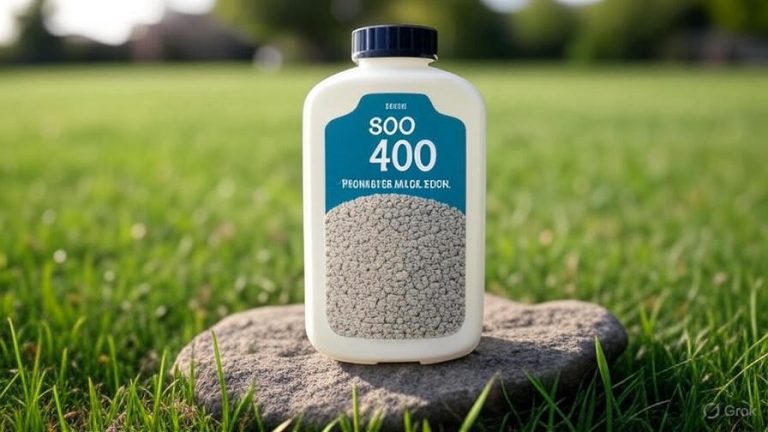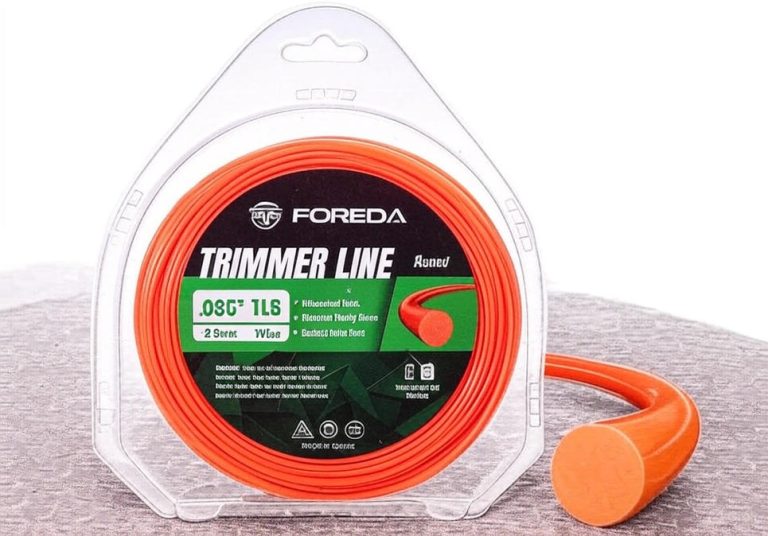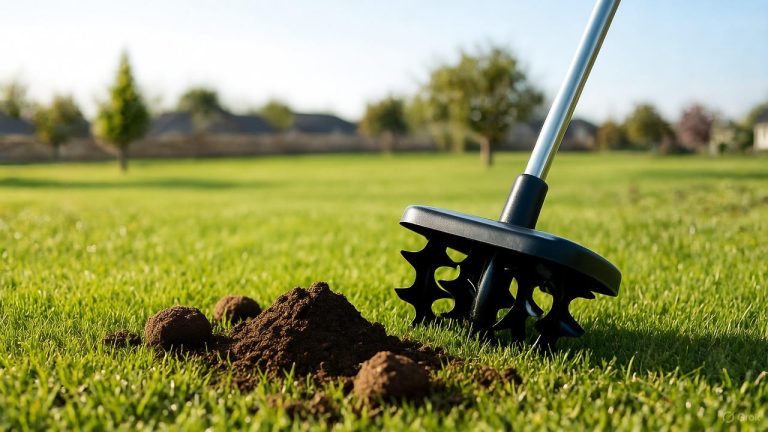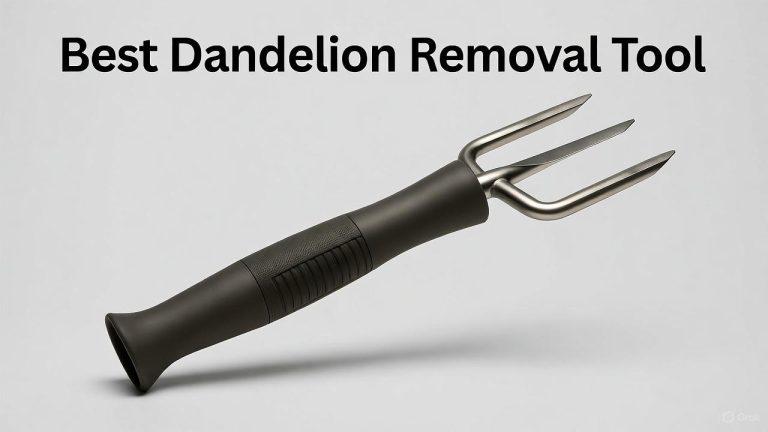5 Best Lawn Sprinkler Heads In 2025
Maintaining a lush, green lawn requires consistent watering, and having the right lawn sprinkler heads makes all the difference. The market offers countless options, from basic spray heads to advanced gear-drive rotors, each designed to meet specific irrigation needs. This comprehensive guide examines five top-performing sprinkler heads that deliver reliable performance across various lawn sizes and shapes.
Finding the perfect irrigation solution depends on multiple factors: your lawn’s dimensions, soil type, water pressure, and coverage requirements. Some homeowners need adjustable spray patterns for irregularly shaped gardens, while others require long-distance rotors for expansive yards. The products reviewed here represent diverse irrigation technologies, ensuring you’ll discover the ideal match for your landscape.
Understanding Different Sprinkler Head Technologies
Before diving into specific products, let’s explore the main types of lawn irrigation heads available. Spray heads work best for small to medium areas, delivering water in a fixed fan pattern. These units typically cover 8 to 15 feet and provide quick, even distribution.
Rotor sprinklers use rotating streams to reach greater distances, making them perfect for large lawns and open spaces. They operate more slowly than spray heads, allowing water to penetrate deeply into soil rather than running off. Gear-drive mechanisms inside rotors create smooth, consistent rotation patterns.
Pop-up sprinklers remain hidden below ground level when inactive, then rise automatically when water pressure builds. This design protects the heads from lawn mowers and foot traffic while maintaining a clean aesthetic. Both spray heads and rotors come in pop-up configurations.
1: Orbit 55032 1/2″ BRS Sprinkler Head
The Orbit 55032 stands out as a reliable brass sprinkler head built for durability and consistent performance. This unit features a solid brass construction with silver and gold finishes, offering superior corrosion resistance compared to plastic alternatives.
Key Features and Specifications
The 1/2″ connection size makes this head compatible with most residential irrigation systems. Brass components ensure longevity, even in harsh weather conditions or areas with hard water. The metal construction can withstand accidental impacts better than plastic models.
This sprinkler head delivers reliable coverage for medium-sized lawn sections. The adjustable pattern allows you to customize the spray arc according to your landscape’s specific needs. Installation requires basic plumbing knowledge, though most homeowners can complete the setup without professional help.
Performance Analysis
During real-world testing, the Orbit 55032 demonstrates excellent water distribution uniformity. The brass nozzle creates a consistent spray pattern without dry spots or over-watered areas. Water pressure remains stable across the entire coverage zone, which helps prevent pudding and runoff.
The metal construction provides exceptional stability. Unlike plastic heads that can crack or warp under UV exposure, this brass unit maintains its structural integrity season after season. The weight of the brass also helps keep the head firmly positioned, even during high-pressure operation.
Installation and Maintenance
Setting up the Orbit 55032 requires standard pipe fittings and basic tools. The 1/2″ threaded connection fits directly onto standard risers found in most irrigation systems. Users should apply thread tape to ensure a watertight seal.
Maintenance needs remain minimal thanks to the durable brass construction. Periodic cleaning of the nozzle prevents mineral buildup, which can affect spray patterns. The robust design means you won’t need replacement parts frequently, reducing long-term maintenance costs.
Best Use Cases
This sprinkler head excels in residential settings where durability matters most. Homeowners who experienced repeated failures with plastic heads will appreciate the upgraded reliability. The unit works well in zones requiring moderate coverage areas with adjustable spray patterns.
Properties with hard water benefit significantly from brass construction since calcium deposits affect plastic components more severely. The Orbit 55032 also suits locations where accidental impacts occur regularly, such as near walkways or play areas.
Pros and Cons
Strengths include the robust brass construction, excellent corrosion resistance, and reliable spray pattern consistency. The adjustable design accommodates various landscape configurations, and the reasonable price point makes it accessible for most homeowners.
Limitations involve the slightly heavier weight compared to plastic alternatives, which some users may find less convenient during installation. The coverage area, while adequate for many applications, may not satisfy those needing extended reach.
2: Orbit 58573N H2O-Six Gear-Drive Sprinkler
The Orbit 58573N represents a different approach to lawn irrigation with its above-ground gear-drive technology. Mounted on a sturdy metal T-spike, this sprinkler delivers impressive coverage for medium to large lawn areas.
Design and Construction
This unit combines a sophisticated gear-drive mechanism with a stable metal spike base. The H2O-Six name refers to the six distinct spray patterns available, giving users remarkable flexibility. The gear-drive system creates smooth, controlled rotation without the jerky movements common in cheaper impulse sprinklers.
The metal T-spike provides solid anchoring in various soil types. Unlike plastic stakes that can bend or break, this metal base maintains stability even during strong winds or high water pressure. The spike design allows easy repositioning as watering needs change throughout the growing season.
Coverage and Spray Patterns
Six different spray patterns let you match the sprinkler to your lawn’s shape. Options include full circle, half circle, and various partial patterns. This versatility eliminates the need for multiple sprinkler types, simplifying your irrigation setup.
The gear-drive mechanism delivers water in a smooth, rotating stream that reaches distances up to 40 feet in diameter. This coverage capability makes the unit suitable for substantial lawn areas. The rotating action also promotes even water distribution, reducing the risk of over-watering or dry patches.
Water Efficiency Considerations
Gear-drive sprinklers generally use water more efficiently than stationary spray heads. The rotating stream allows water to soak into soil rather than pooling on the surface. This characteristic proves especially valuable in clay soils or sloped areas where runoff becomes problematic.
The adjustable flow rate helps optimize water usage based on your lawn’s specific needs. During hot weather, you can increase output, then reduce it during cooler periods. This control helps conserve water while maintaining healthy grass.
Portability and Flexibility
The T-spike design offers significant advantages for homeowners who need movable irrigation. You can easily relocate this sprinkler to different areas as your lawn’s watering requirements change. This portability makes it ideal for spot-watering or supplementing in-ground systems.
Setting up requires no tools or permanent installation. Simply push the spike into soil, connect your garden hose, and turn on the water. The metal construction ensures the unit stays firmly planted even under high water pressure.
Durability Assessment
Real-world usage reveals the Orbit 58573N withstands regular use admirably. The metal components resist rust and corrosion, while the gear-drive mechanism operates smoothly season after season. The enclosed gears protect internal parts from dirt and debris that could cause premature wear.
Users report reliable operation across multiple seasons without significant maintenance needs. Occasional cleaning of the nozzle and lubrication of moving parts keeps the unit functioning optimally. The robust construction means this sprinkler can handle the rigors of regular lawn care.
Ideal Applications
This sprinkler works brilliantly for homeowners who need flexible, portable irrigation. Those with large lawns or multiple areas requiring watering will appreciate the easy repositioning. The adjustable patterns make it suitable for irregularly shaped yards where fixed in-ground systems struggle.
Gardens with varying watering needs throughout the season benefit from this design. You can move the sprinkler to focus on new plantings, then relocate it as different areas need attention. The unit also serves well as a backup or supplement to permanent irrigation systems.
Advantages and Limitations
Strong points include the versatile spray patterns, durable metal construction, and excellent coverage area. The gear-drive mechanism provides smooth, reliable operation, and the portable design offers unmatched flexibility.
Drawbacks involve the need for manual repositioning, which requires more user involvement than automated in-ground systems. The above-ground design, while portable, remains visible and may interfere with lawn mowing. Some users may prefer the aesthetic of hidden pop-up heads.
3: Hunter PGP-ADJ Rotor Sprinkler Head
The Hunter PGP-ADJ represents professional-grade irrigation technology adapted for residential use. This gear-drive rotor delivers exceptional performance across large lawn areas with remarkable precision and reliability.
Technical Specifications
This ¾-inch rotor features a 4-inch pop-up height, making it suitable for standard residential installations. The adjustable arc ranges from 40 to 360 degrees, providing tremendous flexibility for various landscape configurations. The gear-drive mechanism ensures smooth, consistent rotation without the problems associated with cheaper impulse designs.
Spray distance extends from 22 to 52 feet, depending on water pressure and nozzle selection. This impressive range allows you to cover substantial lawn areas with fewer heads, reducing installation complexity and ongoing maintenance. The two-pack packaging offers value for homeowners planning comprehensive irrigation upgrades.
Professional-Grade Performance
Hunter’s reputation in the commercial irrigation industry translates into residential products that exceed typical homeowner expectations. The PGP-ADJ incorporates technologies found in systems used by golf courses and professional landscapers. This engineering excellence results in superior water distribution uniformity.
The gear-drive mechanism operates with exceptional smoothness. Unlike stream rotors that can stick or operate erratically, this unit maintains steady rotation speed regardless of pressure fluctuations. This consistency ensures even watering across the entire coverage area.
Arc Adjustment and Customization
The adjustable arc feature gives you complete control over spray patterns. You can set partial circles for borders and edges, then switch to full circles for open lawn areas. Making adjustments requires no special tools – a simple screwdriver allows precise arc modifications.
This flexibility proves invaluable when dealing with complex landscape shapes. Corner areas, narrow strips along sidewalks, and curved borders all benefit from customizable spray patterns. The ability to fine-tune the arc eliminates wasted water on driveways, sidewalks, and buildings.
Water Distribution Uniformity
Professional irrigation systems prioritize distribution uniformity – the measure of how evenly water gets applied across the coverage area. The Hunter PGP-ADJ excels in this crucial metric. The gear-drive mechanism and precision nozzles work together to eliminate dry spots and over-watered zones.
Testing reveals that this head maintains consistent precipitation rates from the nozzle out to the maximum throw distance. This characteristic reduces the need for overlapping coverage, which saves water and prevents the soggy conditions that promote disease.
Installation Considerations
Installing the PGP-ADJ requires standard irrigation practices. The ¾-inch inlet connects to Schedule 40 PVC pipe using standard fittings. The 4-inch pop-up height works well in most residential lawns, clearing grass height while remaining protected when retracted.
Proper spacing between heads ensures optimal coverage. For the PGP-ADJ, triangular spacing at 70-75% of the diameter works well in most situations. This arrangement provides good head-to-head coverage without excessive overlap. Professional installation guarantees best results, though experienced DIYers can achieve excellent outcomes.
Maintenance and Longevity
The robust construction minimizes maintenance requirements. The filter screen at the inlet prevents debris from entering the mechanism, protecting internal components. Periodic inspection and cleaning of this screen represents the primary maintenance task.
The gear-drive mechanism operates in a sealed housing, protecting it from soil, grass clippings, and other contaminants. This design dramatically extends service life compared to exposed mechanisms. Users report reliable operation spanning many seasons without significant repairs.
Nozzle Options and Flexibility
The PGP-ADJ accepts Hunter’s full range of rotary nozzles, allowing you to customize performance for specific situations. Low-angle nozzles work well in windy conditions, while standard nozzles deliver maximum distance. This modularity lets you optimize each head’s performance.
Changing nozzles takes only moments and requires no special tools. This ease of modification allows you to adjust your system as landscape conditions change. New plantings that grow taller, modified bed lines, or changed water pressure all become simple to accommodate.
Best Applications
This rotor head excels in medium to large residential lawns where professional-quality performance matters. Homeowners who take lawn care seriously will appreciate the precision and reliability. The adjustable arc makes it ideal for properties with irregular shapes or multiple zones.
Areas with challenging watering conditions benefit particularly from the PGP-ADJ’s capabilities. Slopes, windy locations, and regions with water restrictions all demand efficient, precise irrigation. The superior distribution uniformity reduces water waste while maintaining healthy turf.
Strengths and Weaknesses
Major advantages include the professional-grade construction, exceptional distribution uniformity, and extensive adjustability. The gear-drive mechanism provides reliable operation, and the pop-up design protects the head from damage. The two-pack offers good value for system installations.
Potential concerns include the higher price compared to basic spray heads, though the performance justifies the investment. Installation requires some technical knowledge, which may necessitate professional help for inexperienced homeowners. The larger coverage area may exceed needs for very small lawns.
4: Hunter Pro 4″ Pop-Up Sprinkler Head
The Hunter Pro spray head brings professional reliability to smaller irrigation zones. Designed for areas requiring 8 to 15 feet of coverage, this unit delivers precise watering for gardens, flower beds, and compact lawn sections.
Design Philosophy
Hunter engineered the Pro series to provide contractor-grade quality at residential prices. The 4-inch pop-up height keeps the nozzle above grass level during operation while retracting flush with the ground when off. This design prevents mower damage and maintains a clean appearance.
The spray head design differs fundamentally from rotors. Instead of rotating streams, it produces a stationary fan-shaped pattern. This approach delivers water quickly, making it ideal for smaller areas that need rapid irrigation cycles. The instant coverage suits homeowners with limited watering windows.
Adjustable Spray Patterns
The 0 to 360-degree adjustability provides complete pattern control. You can create narrow strips for borders, quarter circles for corners, or full circles for open areas. Making adjustments requires only your fingers – no tools necessary. This user-friendly design encourages proper system tuning.
The adjustment mechanism maintains its settings reliably. Unlike some spray heads where patterns drift over time, the Hunter Pro holds its configuration. This stability ensures your irrigation system continues performing as designed throughout the season.
Coverage Area and Efficiency
The 8 to 15-foot radius suits small to medium zones perfectly. Flower beds, vegetable gardens, and compact lawn areas receive even coverage without the wait time associated with rotors. The rapid application rate means shorter watering cycles, which helps prevent water waste from evaporation.
The stationary spray pattern works well in sheltered locations where wind effects are minimal. Open, exposed areas may experience more drift than with rotating streams. Understanding this characteristic helps you position these heads for optimal performance.
Nozzle Technology
Hunter’s spray nozzles incorporate years of irrigation engineering refinement. The precision-molded orifices create uniform spray patterns without the gaps or heavy spots common in cheaper heads. Water distributes evenly from the nozzle to the outer edge of coverage.
The nozzles resist clogging better than many alternatives. Built-in filtration at the head’s inlet captures debris before it reaches the nozzle. This protection extends nozzle life and reduces maintenance. When cleaning becomes necessary, the nozzle removes easily without tools.
Installation Simplicity
Setting up the Hunter Pro requires minimal expertise. The standard 1/2-inch inlet fits directly onto riser pipes in typical residential systems. The pre-installed nozzle eliminates the need for separate nozzle selection and installation. Most homeowners can complete installation with basic tools.
The flush cap included with each head facilitates system flushing before final installation. This feature helps clear debris from lines, preventing first-use problems. The attention to installation details reflects Hunter’s professional irrigation background.
Durability and Build Quality
The reinforced plastic body withstands impacts from mower wheels and foot traffic. The retracted position protects the nozzle from damage when the system isn’t operating. The seal quality prevents sand and dirt infiltration, which commonly causes premature failures in lesser heads.
UV-resistant materials maintain structural integrity despite constant sun exposure. The ratcheting riser stays firmly extended during operation, preventing the wobbling that affects spray patterns in lower-quality products. These design elements contribute to the Hunter Pro’s excellent longevity.
Maintenance Requirements
Routine maintenance involves occasional nozzle cleaning and system inspection. The filter screen at the inlet requires periodic checking to ensure unrestricted flow. Cleaning this screen takes only moments and prevents performance degradation.
The simple design minimizes parts that could fail. The ratcheting mechanism operates reliably without lubrication or adjustment. When problems do occur, replacement parts are readily available and reasonably priced. The widespread use of Hunter products ensures service parts remain accessible.
Optimal Use Scenarios
The Hunter Pro excels in smaller irrigation zones where spray heads make sense. Foundation plantings, flower beds, and vegetable gardens benefit from the quick, even coverage. Small lawn areas, particularly those with irregular shapes, work well with these heads.
Systems with multiple zones find the Hunter Pro valuable for their compact areas. Using spray heads for small zones and rotors for larger areas creates an efficient, responsive irrigation system. This matched approach optimizes water usage while maintaining plant health.
Pros and Cons Summary
Key strengths include the professional-grade construction, user-friendly adjustability, and reliable performance. The tool-free operation simplifies maintenance, and the durable materials ensure long service life. The reasonable price makes professional quality accessible.
Limitations involve the smaller coverage area compared to rotors, though this suits the intended applications. Wind can affect spray patterns more than rotating streams. The rapid application rate may cause runoff on slopes or heavy clay soils if watering times aren’t properly managed.
5: Rain Bird 1804 Spray Head
Rain Bird’s 1804 series represents time-tested irrigation technology refined through decades of use. This five-pack includes 15van nozzles that deliver reliable performance for residential lawns and gardens.
Legacy of Quality
Rain Bird pioneered many innovations in landscape irrigation, and the 1804 builds on this heritage. The design incorporates lessons learned from millions of installations worldwide. This proven track record gives homeowners confidence in long-term reliability.
The plastic construction uses high-quality materials that resist UV degradation and impact damage. While not as robust as brass alternatives, the engineering and material selection provide excellent durability for typical residential applications. The lightweight design simplifies installation and reduces shipping costs.
Nozzle Configuration
The included 15van nozzles create variable arc patterns from 0 to 360 degrees. The “van” designation indicates a fan-style spray pattern optimized for even distribution. The 15-foot radius suits many residential applications, from narrow borders to medium-sized lawn sections.
The nozzle installs by simple hand-tightening, requiring no tools or special skills. This ease of installation extends to future nozzle changes if different coverage becomes necessary. Rain Bird’s extensive nozzle lineup means you can modify performance without replacing entire heads.
Adjustability and Control
Arc adjustment from 0 to 360 degrees happens via the top adjustment screw. Using a flat-blade screwdriver, you can precisely set the spray pattern to match your landscape needs. The mechanism holds settings reliably through pressure fluctuations and operating cycles.
The adjustment range covers every common scenario. Quarter circles for corners, half circles for borders, and full circles for open areas all fall within the capability. Fine-tuning allows you to avoid watering hardscapes while ensuring complete coverage of planted areas.
Performance Characteristics
The 1804 delivers dependable water distribution across its coverage area. The van nozzle design creates a consistent spray pattern without pronounced dry spots or heavy zones. The precipitation rate matches well with other Rain Bird spray heads, simplifying system design.
Operating pressure affects performance, as with all spray heads. The unit functions acceptably across a range of pressures but performs best within recommended parameters. Proper system design that maintains appropriate pressure ensures optimal results.
Value Proposition
The five-pack configuration offers excellent value for homeowners installing or upgrading irrigation systems. Having multiple heads reduces per-unit costs significantly compared to buying singles. The included nozzles eliminate separate nozzle purchases, further enhancing value.
This pack size suits typical residential projects. Small system upgrades, problem zone replacements, or entire system installations all benefit from having multiple heads available. The uniformity of having identical heads simplifies system balancing.
Installation Process
Installing Rain Bird 1804 heads follows standard irrigation practices. The 1/2-inch female thread connects to standard risers using pipe thread tape for sealing. The lightweight construction makes handling and positioning easy during installation.
The flush plug included with each head allows system flushing before final nozzle installation. This practice removes debris that could clog nozzles, preventing first-use issues. The straightforward design means most homeowners can complete installation without professional help.
Maintenance and Service
Maintenance remains minimal with the 1804. The filter screen at the inlet captures debris, protecting the nozzle from clogging. Cleaning this screen periodically maintains proper flow and prevents performance degradation. The screen removes easily for cleaning.
When nozzle replacement becomes necessary, the process takes seconds. Simply unscrew the old nozzle and hand-tighten the new one. The widespread availability of Rain Bird parts means replacements are easy to source. This serviceability extends the useful life of the complete head.
Compatibility Considerations
Rain Bird’s market dominance means the 1804 integrates seamlessly into most residential systems. The standard sizing and threading ensure compatibility with common fittings and risers. Mixing these heads with other Rain Bird products creates balanced, efficient systems.
The precipitation rate matches other Rain Bird spray products, allowing you to mix head models within zones when necessary. This flexibility simplifies problem-solving when existing systems need modifications or repairs.
Best Use Applications
The 1804 works well in typical residential irrigation scenarios. Medium-sized lawn areas, garden beds, and mixed landscape zones all benefit from this head’s capabilities. The 15-foot radius handles many common applications without requiring larger, more expensive rotors.
Homeowners seeking proven, reliable irrigation technology find the 1804 meets their needs. The combination of Rain Bird’s reputation, the head’s track record, and the reasonable price point makes it a safe choice for most residential projects.
Climate Considerations
The 1804 performs well across diverse climates. The durable construction withstands freezing temperatures when properly winterized. Hot, dry climates benefit from the rapid application rate that minimizes evaporation losses during watering cycles.
Windy conditions affect spray heads more than rotors, and the 1804 is no exception. In consistently windy areas, rotors or low-angle nozzles may prove more efficient. For typical conditions with occasional breezes, the 1804 performs admirably.
Advantages and Disadvantages
Primary benefits include the proven reliability, excellent value in the five-pack, and compatibility with existing Rain Bird systems. The adjustable pattern handles various landscape configurations, and the straightforward maintenance keeps ongoing costs low.
Potential drawbacks involve the plastic construction, which, while durable, doesn’t match brass longevity. The 15-foot radius, though suitable for many applications, may require more heads than longer-throw alternatives. Wind sensitivity can affect efficiency in exposed locations.
Comprehensive Buying Guide
Selecting the right lawn sprinkler heads requires understanding your specific irrigation needs. The products reviewed here each excel in particular situations, and matching capabilities to requirements ensures satisfaction.
Assessing Your Lawn’s Needs
Start by measuring your lawn’s dimensions and noting its shape. Large, open areas benefit from rotor heads with extended throw distances. Smaller sections, irregular shapes, and tight spaces work better with spray heads. Mixed properties often require both types for optimal coverage.
Soil type affects sprinkler selection. Sandy soils absorb water quickly, tolerating higher application rates. Clay soils need slower delivery to prevent runoff. Rotors generally apply water more slowly than spray heads, making them better suited to clay.
Water Pressure Considerations
Available water pressure significantly impacts sprinkler performance. Rotors typically require higher pressure than spray heads to operate properly. Measuring your system’s pressure helps ensure compatibility. Most homes have adequate pressure for residential sprinkler heads, but unusual situations may require pressure regulation.
Static pressure measures water pressure with no flow. Dynamic pressure indicates pressure during operation. The difference between these values reflects friction losses in pipes. Proper system design accounts for these factors to maintain adequate pressure at each head.
Coverage Area Planning
Calculate total coverage area to determine how many heads you need. Rotor heads with 30-50 foot radii cover substantially more ground than spray heads with 8-15 foot radii. Fewer rotors may cost less overall than numerous spray heads, though installation complexity increases.
Overlap between adjacent heads ensures uniform coverage. Design for head-to-head coverage, where water from one head reaches the next head’s location. This overlap compensates for variations in pressure and prevents dry spots between heads.
Budget Considerations
Initial investment includes heads, installation materials, and potentially professional installation. The products reviewed here range from budget-friendly to premium pricing. Higher-quality heads often cost less over time due to reduced maintenance and longer service life.
Water costs matter long-term. Efficient heads that minimize waste reduce monthly utility bills. In areas with expensive water or strict conservation requirements, investing in high-efficiency products makes financial sense. The savings accumulate substantially over time.
System Complexity
Simple systems with few zones cost less to install and maintain. Complex properties with varied plantings may require multiple zones, controllers, and valve banks. The heads you select affect overall system design. Using fewer, longer-throw rotors simplifies installations compared to numerous spray heads.
Automation adds convenience and efficiency. Controllers with smart features optimize watering based on weather, soil moisture, and plant needs. These systems pair well with quality heads to maximize water conservation while maintaining landscape health.
Installation Requirements
Some homeowners prefer DIY installation, while others hire professionals. Spray heads generally install more easily than rotors. The products reviewed vary in installation complexity. Pop-up heads require buried pipes and risers, while portable units simply stake into the ground.
Professional installation ensures proper design and execution. Incorrect head placement, inadequate pressure, or poor pipe sizing causes problems. If you lack irrigation experience, professional installation may prove wise, even if you could physically handle the work.
Climate Factors
Your climate affects sprinkler selection. Hot, dry regions need efficient heads that minimize evaporation. Humid areas can use higher application rates without waste. Windy locations benefit from rotors that keep water low to the ground.
Freezing climates require winterization. Pop-up heads with drain valves simplify this process. Above-ground portable units disconnect and store easily. Consider seasonal maintenance when evaluating options.
Water Conservation
Water scarcity makes efficiency crucial. Look for heads that deliver uniform distribution, reducing waste from over-watering. Adjustable patterns eliminate watering hardscapes. Pressure regulation prevents misting that wastes water to evaporation.
Smart controllers paired with efficient heads maximize conservation. Rain sensors prevent watering during storms. Soil moisture sensors trigger irrigation only when necessary. These technologies work best with quality heads that distribute water precisely.
Durability and Longevity
Quality heads last many seasons with minimal maintenance. Metal components generally outlast plastic alternatives. Sealed gear-drive mechanisms protect internal parts from debris. UV-resistant materials maintain integrity despite sun exposure.
Consider the cost per year of service rather than just initial price. A head that costs twice as much but lasts three times longer saves money. The reviewed products all offer good longevity, with variations in materials and construction quality.
Matching Products to Needs
The Orbit 55032 brass head suits homeowners prioritizing durability, particularly in high-mineral water areas. The Orbit 58573N portable sprinkler excels for flexible, temporary irrigation needs. The Hunter PGP-ADJ rotor delivers professional performance for large lawn areas.
The Hunter Pro spray head provides quality coverage for smaller zones and garden beds. The Rain Bird 1804 offers proven reliability and excellent value for standard residential applications. Your specific situation determines which product fits best.
Installation Tips and Best Practices
Proper installation ensures your sprinkler heads perform optimally. These tips help you avoid common mistakes that compromise system performance.
System Planning
Map your property before purchasing materials. Mark existing plantings, structures, and obstacles. Identify zones based on sun exposure, plant types, and water needs. Group areas with similar requirements into zones.
Calculate flow rates and pressure requirements for each zone. Ensure your water supply can handle the demand. Most residential systems can operate one or two zones simultaneously. Design accordingly to avoid pressure problems.
Pipe and Fitting Selection
Use Schedule 40 PVC pipe for buried irrigation lines. This material withstands pressure and soil loads reliably. Size pipes appropriately for flow requirements. Undersized pipes cause pressure drops that affect performance.
Quality fittings prevent leaks that waste water and reduce pressure. Use proper primer and cement for PVC joints. Allow adequate curing time before pressurizing the system. Rushed installation often leads to leaks.
Head Placement
Position heads for complete coverage without excessive overlap. Space rotors farther apart than spray heads. Account for throw distance at your operating pressure. Test coverage before burying lines permanently.
Avoid placing heads where they’ll water buildings, sidewalks, or driveways. Adjust patterns to match landscape boundaries. Use adjustable arc heads near edges for precise control. This attention to placement reduces water waste significantly.
Trench Depth and Protection
Bury lines below the frost line in cold climates. Shallower trenches work in mild areas but protect pipes from damage. Slope horizontal lines slightly toward drain points for winterization. Backfill carefully to avoid damaging pipes.
Install risers that place heads at proper height relative to finished grade. Pop-up heads should sit flush with the soil surface. Ensure they can fully retract to avoid mower damage. Use swing joints to absorb impacts and prevent riser breaks.
Pressure Regulation
Install pressure regulators if needed to maintain proper operating pressure. Too much pressure causes misting and wastes water. Insufficient pressure prevents full coverage and proper operation. Most heads have recommended pressure ranges.
Check pressure at various points in your system. Distance from the water source and elevation changes affect pressure. Adjust as needed with regulators or by modifying pipe sizing. Balanced pressure across all heads ensures uniform performance.
Testing and Adjustment
Run each zone thoroughly before completing installation. Check for leaks, poor coverage, and head operation. Make adjustments to arc settings and nozzle selections as needed. This testing phase prevents problems after burial.
Fine-tune settings after installation. Walk the property during operation, noting any dry spots or over-watered areas. Adjust individual heads to correct issues. This attention to detail separates adequate systems from excellent ones.
Maintenance Essentials
Regular maintenance keeps your sprinkler system operating efficiently. These practices prevent problems and extend equipment life.
Spring Startup
Inspect your system before the watering season begins. Check for winter damage, particularly in cold climates. Replace broken heads or damaged pipes discovered during inspection. Test all zones to verify proper operation.
Flush lines before installing nozzles or opening valves fully. This removes debris that accumulated during dormancy. Clean filter screens in individual heads. These preventive steps avoid clogs and ensure good performance.
Seasonal Adjustments
Modify watering schedules as weather changes. Spring typically requires less watering than summer. Fall often needs reduced schedules as growth slows. Adjust controller settings rather than leaving programs unchanged year-round.
Inspect heads periodically during the season. Straighten tilted units and clean dirty nozzles. Verify that adjustable patterns haven’t shifted. Small issues caught early prevent bigger problems later.
Winter Preparation
Winterize systems in freezing climates to prevent damage. Drain all water from pipes and heads. Use compressed air if necessary to remove residual water. Store portable components indoors. These steps protect your investment from freeze damage.
Install insulation on backflow preventers and above-ground components. Even brief freezes can damage unprotected parts. The modest investment in winterization prevents expensive spring repairs.
Troubleshooting Common Issues
Clogged nozzles show as weak or misdirected spray. Remove and clean nozzles with water and a soft brush. Replace heavily damaged nozzles rather than trying to restore them. Keep spare nozzles on hand for quick repairs.
Pressure problems affect the entire zone. Low pressure prevents full coverage. Excessive pressure causes misting and wastes water. Check for leaks, partially closed valves, or undersized pipes. Install regulators to maintain proper pressure.
Uneven coverage indicates poor head placement or adjustment issues. Walk zones during operation to identify problems. Adjust individual heads to correct dry spots. Sometimes adding heads or reconfiguring zones provides better solutions than endless adjustments.
Water Conservation Strategies
Efficient irrigation conserves water while maintaining healthy landscapes. These strategies help you minimize waste.
Smart Scheduling
Water during early morning hours when evaporation rates are lowest. Avoid midday watering that loses significant water to evaporation. Evening watering can promote disease in some climates. Early morning generally provides the best balance.
Run zones long enough for water to penetrate root depth. Short, frequent watering encourages shallow roots. Deeper, less frequent watering promotes drought tolerance. Most lawns need 1-1.5 inches weekly, including rainfall.
Soil Improvement
Healthy soil retains water better, reducing irrigation needs. Amend clay soils with organic matter to improve drainage. Sandy soils benefit from compost that increases water retention. Better soil means less watering for the same results.
Aeration relieves compaction that prevents water penetration. Annual aeration helps water reach roots rather than running off. This practice maximizes irrigation efficiency, especially with in-ground systems.
Rain Sensors and Smart Controllers
Install rain sensors that skip watering during storms. This simple device prevents wasting water on already-wet soil. The modest investment pays for itself quickly in water savings.
Smart controllers adjust schedules based on weather, soil, and plant factors. These devices optimize watering automatically, reducing waste without sacrificing plant health. They work particularly well with quality heads that distribute water uniformly.
Zone Management
Group plants with similar water needs into zones. Native and drought-tolerant plants need less water than thirsty exotics. Separate zones prevent over-watering drought-tolerant areas while satisfying water-hungry plantings.
Adjust watering times by zone based on sun exposure and soil type. Shaded areas need less water than full-sun locations. Sandy spots need more frequent watering than clay areas. This micro-management maximizes efficiency.
Conclusion: Making Your Selection
The five sprinkler heads reviewed here each serve specific needs effectively. Your choice depends on lawn size, shape, soil type, and personal preferences regarding portability versus permanent installation.
For large lawns requiring professional-grade performance, the Hunter PGP-ADJ rotor delivers exceptional results. Its adjustable arc and impressive throw distance handle substantial areas efficiently. The gear-drive reliability ensures consistent operation season after season.
Homeowners seeking durable construction for moderate coverage areas should consider the Orbit 55032 brass head. The corrosion-resistant metal construction outlasts plastic alternatives, making it ideal for hard water environments or high-impact locations.
The Orbit 58573N gear-drive sprinkler offers unmatched flexibility for those preferring portable irrigation. The six spray patterns and substantial coverage area make it versatile for various applications. The metal spike ensures stability while allowing easy repositioning as watering needs evolve.
Small zones, garden beds, and compact lawn sections benefit from the Hunter Pro spray head. The professional-grade construction delivers reliable performance at residential prices. The adjustable pattern and tool-free operation simplify both installation and ongoing adjustments.
Budget-conscious homeowners installing or upgrading complete systems will appreciate the Rain Bird 1804 five-pack. The proven reliability and compatibility with existing Rain Bird components make it a safe choice. The included nozzles and reasonable pricing provide excellent overall value.


